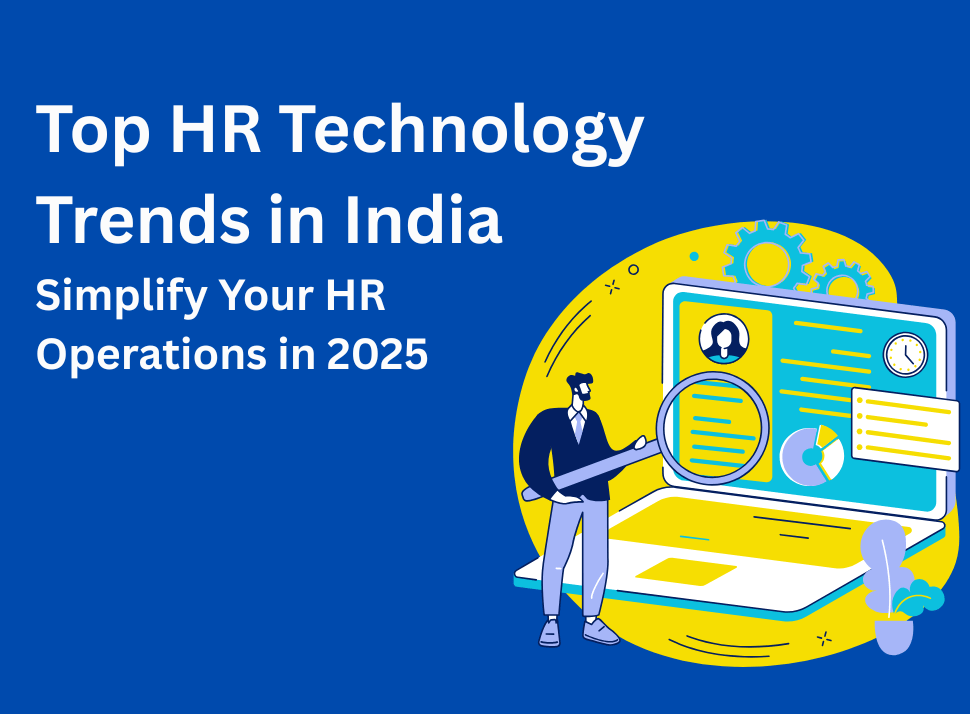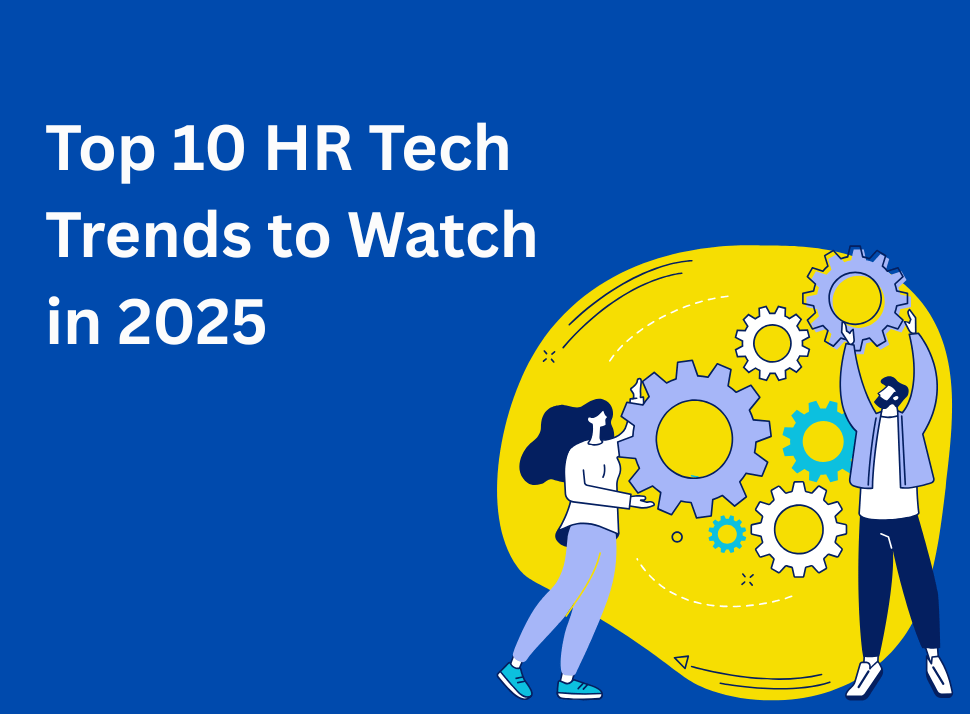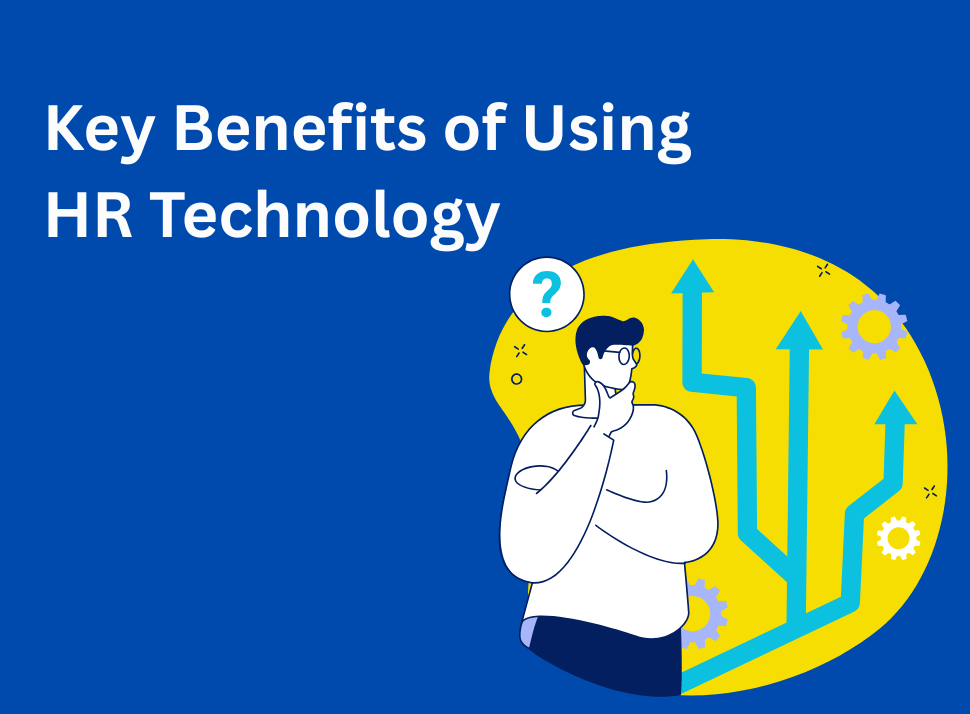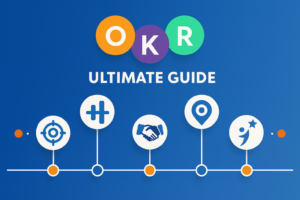HR departments are undergoing a significant transition in the dynamic business world of today, moving from traditional administrative responsibilities to strategic enablers of organisational success. With its smarter, more connected, and employee-centric solutions, HR technology is leading this change in 2025.
Businesses now understand that good HR technology can boost engagement, improve performance, and encourage workforce agility. This blog examines the leading HR technology trends that are influencing the nature of work in the future and the enormous advantages that businesses can reap by adopting them.
What is HR Technology?
Software tools coupled with digital solutions work as HR technology to handle resource management and improve operational performance for organizational human resource management functions. The category includes payroll management along with recruitment and performance reviews as well as attendance monitoring and onboarding procedures and compliance standards and learning programs.
User experience within HR technology only defines itself by automation of paperwork and spreadsheet management in 2025. The technology enables real-time decision-making functions for better employee experiences as well as HR strategy alignment with business goals.
Modern business operations have adopted integrated platforms to deliver predictive analytics with employee engagement features through innovations like AI and automation and blockchain technology.
Top 10 HR Technology Trends in 2025
1. Artificial Intelligence and Automation
Artificial Intelligence (AI) is transforming HR by eliminating repetitive work and supporting better decisions.
AI-Powered Recruitment and Onboarding
AI-powered recruitment and onboarding platforms allow HR to review and shortlist resumes; in some cases, HR can conduct early-phase video interviews through an automated process. Onboarding has improved through personalized training modules and automated paperwork.
Automated Performance Management
Performance reviews are now data-guided with AI pulling data from KPIs, patterns of feedback, and engagement scores for real-time performance information.
AI for Engagement and Retention
AI algorithms measure team behavioural data to find instances of disengaged employees or “flight risks” and allow HR to take proactive action.
Automation is no longer an option; it is quickly becoming a must-have requirement of any viable and competitive HR function.
2. Predictive Analytics
Predictive analytics provides insight into probable future outcomes in HR based on both past and present data and allows human capital management to become more strategic than ever before.
Workforce Planning and Forecasting
Organizations are now basing talent needs projections, budgets and succession plans on analytics, instead of hunches.
Data-driven decision-making
From hiring selections to team restructuring, HR departments are utilizing predictive analytics to improve outcomes and lessen bias.
Personalized employee experiences
With the help of analytics, organizations can understand how employees behave and what they want, and create specific learning paths and career paths.
Data is the new oil, and predictive analytics allows HR to make the most of it.
3. Remote Work and Flexible Policies
Remote work is assuredly here to stay as HR technology continues to evolve to accommodate the ongoing requirement for and use of distributed work teams across most organizations.
Cloud-based HR technologies
Cloud-based HR technology enables employees to manage tasks like marking attendance, requesting vacation or sick leave, and accessing company policies from virtually anywhere. This flexible, modern solution enhances efficiency and convenience for both employees and HR teams.
For more information, explore trusted HR tech resources or consult with industry experts.
Digital collaboration platforms
Software such as Slack and Microsoft Teams and HR dashboard systems integration have evolved to allow remote teams to remain connected, productive and engaged. However, to ensure secure communication and protect sensitive data, using the best VPN for multiple devices, recommended by Cybernews, is essential for safe remote access to these platforms.
Using digital business cards at events, interviews, or onboarding sessions allows HR professionals to seamlessly share contact details, role information, and company resources in a secure and professional format. These cards are easily updated, accessible via QR codes or links, and reduce the need for printed materials. Whether at conferences, recruitment drives, or internal meetings, digital business cards offer a streamlined, modern solution for building meaningful connections.
Employee well-being and mental health considerations
HR technologies feature mental health resource information, burnout indicators, and organizational well-being assessments which support holistic performance management in the context of the organizational culture.
Flexibility is no longer simply a nice benefit to have; it is now a component of how we work, both individually and as a workforce, and HR technology supports this activity.
4. Employee Experience and Engagement
By 2025, organizations will be consciously investing in technologies that prioritize employee satisfaction and connection.
Gamification and Microlearning
Learning is becoming fun and small. Gamified modules with quizzes, leaderboards and rewards will drive participation and retain knowledge longer.
Social Recognition Tools
Recognizing employees in real-time is now possible on recognized platforms. Employees are making the act of recognition part of the culture; everyone appreciates being recognized.
Personalized Career Development
Career pathing tools now offer not only suggestions on learning modules and stretch assignments, but suggestions that match individual aspirations with pillars of importance to the organization.
Engaged employees are productive employees, and technology is being shaped to promote these experiences.
5. HR Chatbots and Virtual Assistants
HR chatbots have come a long way in 2025 and are now ability smart virtual assistants for employees and HR professionals.
24/7 Employee Support
Chatbots are able to answer FAQs, questions about policies, and requests for documents at lightning speed, so employees can get the support they need when they need it.
Automated Workflows
HR bots can assist in scheduling interviews, collecting feedback about interviewees and sending reminders, enabling organizations to work more efficiently.
Productivity Boost
HR professionals have the potential to devote more time to strategic opportunities because HR bots will take care of routine questions.
Virtual HR assistants have truly enabled operational excellence in the workplace today.
6. Blockchain for HR
While blockchain was once simply a buzzword, it is now truly emerging in HR stages, particularly in terms of data security and clarity.
Tamper-Proof Employee Records
Blockchain ensures that employee data, such as certifications, work history, and appraisals is safe and verifiable.
Transparent performance reviews
The employee’s feedback and appraisal history, which will also be recorded on blockchain will increase accountability and create more trust in the evaluations.
Decentralized payroll
Smart contracts are making international payments, benefit payouts seamless, error-free, and instant!
Security and trust are uniquely important in HR and blockchain is a reliable structure for both.
7. Integrated HR Platforms
Disparate tools create confusion and inefficiencies, which is why integrated HR platforms are a top concern for 2025.
Unified HR Data Disparate
Tools used to manage payroll, attendance, employee performance, etc., create disjointedness and inefficiencies, but integrated platforms allow HR to have a view of the employee as a whole.
Consistent Employee Experience
With a single portal to manage their learning, employee documents, queries, etc. there is a streamlined experience for employees that is smooth and lacks friction.
Operational Efficiency
Integrated platforms reduce redundancies, eliminate unnecessary manual errors, and subsequently make reporting faster and cleaner.
Kredily is one of the Best HRMS Software in India that offers such an integrated experience, by managing payroll, causative/causal attendance, leave, and employee management in a single, easy-to-comprehend platform.
8. Contingent Workforce Management
With the gig economy increasingly on the rise, organizations can no longer avoid dealing with freelancers, contractors, and consultants.
Contractor Onboarding
Modern HR tools make it easier for organizations to identify, onboard and assign work to contingent workers fast.
Risk and Compliance Management
HR platforms now automatically flag risk to organizations for issues relating to tax compliance, labor laws, and contract expirations.
Expanding Talent Pools
Digital marketplaces and HR integrations make it easier to capitalize on global talent in the freelance market while still being able to manage them.
Managing non-traditional workers has become an essential HR role, and technology is facilitating it.
9. Diversity, Equity, & Inclusion (DEI) Technology
DEI is now built into HR technology and not simply an initiative we do by hand or a reporting we must complete.
Bias-Free Hiring Tools
AI-based recruiting systems strip away names, photos, and other qualifiers to help remove unconscious biases.
Inclusive Platform Features
There are tools that enable accessibility settings, have language preferences, and provide gender-neutral documentation fully baked into their platforms.
Analytics to measure DEI
Sophisticated reporting allows firms to track pay equity, leadership diversity, and promotions among different demographics.
Tech-enabled inclusion is allowing for measurable changes towards fair, inviting, and representative workplaces.
10. HR Outsourcing and HRaaS
Not every organization has an HR department at a large scale. This is where HR Outsourcing and HR-as-a-Service (HRaaS) help.
Access to specialized talent
Organizations gain access to payroll experts, recruiters, and compliance officers without making a long-term commitment by hiring a full-time employee.
Flexible and scalable HR services
Small businesses can acquire fundamental services, so they can ramp up their HR as required without over-investing in a highly complex infrastructure.
Cost-saving operations
Outsourcing routine, lower-level functions means organizations can offload HR overhead while delivering the same service quality to their employees.
HRaaS is enabling expert-level HR for companies of all sizes, and it is growing at a rapid rate.
Top Benefits of HR Technology
As we have established, technology in HR is not only convenient; it is strategically vital. This is how organizations benefit:
Efficiency & productivity
Eliminating repetitive administrative effort, such as data entry, attendance management and payroll allows HR teams to concentrate on strategic work rather than administrative.
Employee Experience
The integration tools streamline employee access to information, consistent feedback, and collaborative development plans which improve employee satisfaction.
Decision Making
The analytics and forecasting tools provide HR departments with an instantaneous snapshot of metrics to not only help but also to make better, faster decisions with increased confidence.
Cost savings
Reducing the number of processes that depend on paper-based transactions and legacy documentation reduces operating costs significantly.
Competitive advantage
Organizations that implement HR technology are able to attract better talent, retain more engaged employees and respond to change faster.
Concluding Remarks
HR technology in 2025 will be smarter, more intuitive, and essential. AI, predictive analytics, blockchain, virtual assistants, and all of these innovations are revolutionizing how HR operates and how employees experience their work.
By investing in modern HR technology, organizations can prepare themselves to not just compete but to thrive in a rapidly changing world of work. The technology is there, the trends are there and the future is digital.
There is no better time than now to rethink HR, not just as a support function, but also as a strategic enabler of success.



